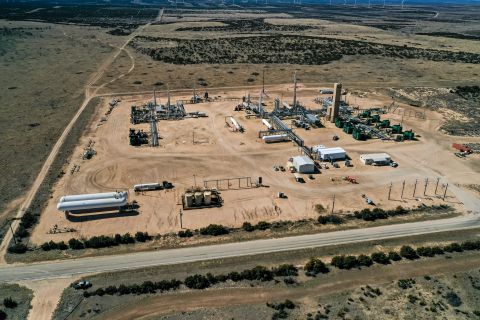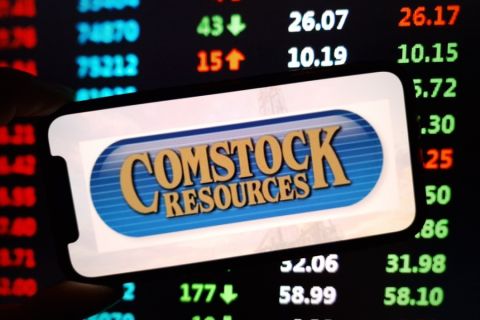 In the weeks leading up to Labor Day, the stock and debt markets were roiled like sailboats bobbing in a stiff breeze. The credit crunch caused by the mortgage crisis quickly replaced a sunny Dow with fear among investors. Jittery speculative oil traders did not help matters much.
In the weeks leading up to Labor Day, the stock and debt markets were roiled like sailboats bobbing in a stiff breeze. The credit crunch caused by the mortgage crisis quickly replaced a sunny Dow with fear among investors. Jittery speculative oil traders did not help matters much. Is the party over? No, but it may change a bit.
What affect will the turmoil have on oil and gas financing? For the average producer, not much. There is a huge difference between Cerberus bailing out money-losing Chrysler Corp. and having a hard time borrowing billions of dollars, and a profitable producer with proved reserves trying to borrow $250 million.
Debt available to the energy industry will likely have stricter provisions, but energy is still popular with banks and institutions, according to James Kipp, managing director with Wachovia Securities Inc. in Houston.
Speaking to an industry group last month, Kipp said he expected institutional debt markets to be on hold until after Labor Day. Public and private deal-making always picks up in September anyway after vacation season ends.
"Transactions for anything below about $1.5 billion can still be done, but there is probably going to be a reversion back to more terms and covenants," Kipp said. "There are still many avenues open to producers at this time."
Independents that are not investment-grade are seeing the cost of debt go up more rapidly than those producers that are investment grade, says Patrick Mooney, senior vice president, Southcoast Capital. "The widening of credit spreads for non-investment-grade issuers has accelerated due in part to the subprime meltdown."
Still, soaring oil prices through the summer encouraged big bets on the upstream. Conglomerate Loews Corp. jumped into E&P for the first time with its $4-billion buy of long-life assets from Dominion Resources. Linn Energy LLC lined up a $1.9-billion credit and $1.5-billion private-equity placement to fund its acquisition of Dominion's Midcontinent properties. McMoRan Exploration Co. bulked up its offshore position by buying $1.1 billion of Gulf shelf assets from Newfield Exploration Co.
Private-equity raises continue to impress. EnerVest Management Partners Ltd. closed on more than $1 billion in its 11th fund. Warburg Pincus and former El Paso and Apache executive Lisa Stewart announced their $1.3-billion fund, Sheridan Production Partners. Based in Houston, it will acquire and exploit producing assets.
Indeed, there is plenty of equity around. The energy IPO market also continues. Within days, Rex Energy Corp., Concho Resources and North American Energy Partners went public. At press time, their collective market cap was about $1.62 billion.
So, the evidence says institutions are still buying the story. Energy should remain one of the few investment bright spots. The fundamentals certainly argue for that.
Longer-term, some experts have begun talking about a magic milestone-$100 oil. The last time we heard this was in the go-go 1980s, and that talk was followed by the infamous crash. Oil has already tested $78 per barrel. Is this the start of a steady climb to new heights?
"An apparent acceleration in world oil demand this year in the face of a doubling of prices over the past three years has left International Energy Agency (IEA) economists scratching their heads," says Jeff Rubin, chief economist and chief strategist at CIBC World Markets in Toronto.
Rubin goes so far as to predict $100 oil by the end of 2008. In a July report, he says such high oil prices are not impossible and in fact, might soon be permanent. The main reason is that major oil-producing nations in the developing world may keep more oil to themselves to satisfy their own soaring demand, and thus, they will export less to the rest of us.
"Together with Mexico and Russia, daily consumption in OPEC countries last year was in excess of 12 million barrels a day-over 60% more than the level of Chinese consumption," Rubin says. "All of a sudden, major oil-producing countries are becoming oil-consuming countries."
The CIBC analyst thinks this trend will widen the gap between demand and supply, reducing crude exports by up to 2.5 million barrels a day between now and the end of this decade. This certainly butts up against projections that demand will rise at least 2% per year in the same timeframe.
Rubin says he is not reassured by Big Oil's past record of using advanced technology to open up new supply, and indeed, he cites more recent warnings from Big Oil that this cannot continue due to access issues.
We are still bullish on price. After all, if not oil, then what? We hear that $40 oil is the new $20. We like that as much as hearing that 50 is the new 30-that's the kind of backwardation we boomers really like.
Last year, Halliburton hired 13,500 people worldwide. Learn how the company managed to do it, in this era of keen competition for energy professionals, at Hart's Recruiting & Retention conference in Houston, October 30. For program details and to register, go to hartenergyconferences.com. We'll see you there!
Recommended Reading
Midstream M&A Adjusts After E&Ps’ Rampant Permian Consolidation
2024-10-18 - Scott Brown, CEO of the Midland Basin’s Canes Midstream, said he believes the Permian Basin still has plenty of runway for growth and development.
Post Oak-backed Quantent Closes Haynesville Deal in North Louisiana
2024-09-09 - Quantent Energy Partners’ initial Haynesville Shale acquisition comes as Post Oak Energy Capital closes an equity commitment for the E&P.
Analyst: Is Jerry Jones Making a Run to Take Comstock Private?
2024-09-20 - After buying more than 13.4 million Comstock shares in August, analysts wonder if Dallas Cowboys owner Jerry Jones might split the tackles and run downhill toward a go-private buyout of the Haynesville Shale gas producer.
Aethon, Murphy Refinance Debt as Fed Slashes Interest Rates
2024-09-20 - The E&Ps expect to issue new notes toward redeeming a combined $1.6 billion of existing debt, while the debt-pricing guide—the Fed funds rate—was cut on Sept. 18 from 5.5% to 5%.
Dividends Declared Sept.16 through Sept. 26
2024-09-27 - Here is a compilation of dividends declared from select upstream, midstream and service and supply companies.
Comments
Add new comment
This conversation is moderated according to Hart Energy community rules. Please read the rules before joining the discussion. If you’re experiencing any technical problems, please contact our customer care team.





